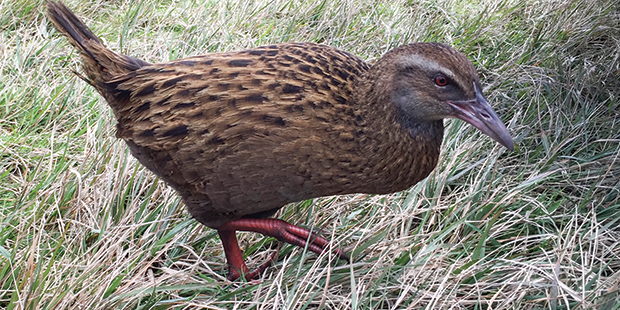The battle for Rotorua's lakes
Wallabies, boaties, farms and human effluent all part of the struggle to improve water quality.


Rotorua’s 12 lakes have seen massive investment in clean-up programmes over decades but a watchdog group says “we’re not out of the woods yet”.
Boaties, wallabies and climate change are among threats to water quality, as well as the effects of human effluent, geothermal elements and pastoral farming.
Bay of Plenty Regional Council's recently released 2018-19 annual report found all lakes failed to meet target trophic level indexes that year. The index measures nitrogen, phosphorous, water clarity and chlorophyll-a in lakes.
Tarawera was in poor condition but expected to improve. Rotokakahi, Rerewhakaaitu, Okataina and Tikitapu were graded moderate.
Rotorua's three-year rolling average achieved the target but its 2018-19 result did not. Rotoiti was in good condition, Okareka reasonable.
John Gifford is president of the Lakes Water Quality Society. He says the state of the lakes has been an issue for decades – his society was formed in 1961 as the Lakeweed Control Society.
The regional council regards fixing the lakes’ water quality as a priority. Its 2012-22 10 Year Plan has a range of regulatory, incentive and engineering programmes designed to improve water quality over the long term. That includes $45.5m incentive and gorse programmes to work with landowners to achieve permanent nitrogen reductions by changing land use, noting that pastoral farming (dairy and dry stock) contributed 76.5 per cent of the nitrogen entering Lake Rotorua.
Currently before the Environment Court is Proposed Plan Change 10, which sets a nitrogen discharge allocation for each property. This applies to dairy, sheep and beef farms and many lifestyle blocks who would have until 2032 to meet limits for their properties. A $2.2m-funded service has been set up to work alongside landowners.
Management of the lakes is now the responsibility of the Rotorua Te Arawa Lakes Strategy Group, made up of elected representatives from the regional council, Te Arawa Lakes Trust and Rotorua Lakes Council, with support from the Environment Ministry.
Gifford says the lakes are “still a little bit on steroids. We’re intervening through the application of phosphorus-locking technology, application of alum and things like that.”
Rotorua’s human effluent has historically gone into the lake but has been put onto forest land since the early 1980s. The regional and district councils have applied to put it back into the lake after the effluent has gone through a new high-tech treatment process.
There’s been a huge effort on reticulation, particularly around Rotoiti, Rotoehu and Rotoma, but there’s concern around Tarawera where a lot of effluent still runs into septic tanks and nutrients ultimately reach the lake. That is compounded because some people take their water supply from the lake.
The society’s November symposium discussed biosecurity and biodiversity, especially pests such as catfish, which have spread and thrived in Rotorua and Rotoiti lakes over the past few years.
“We’re lobbying strongly that there needs to be much more stringent control of the cleanliness of boats going into lakes,” Gifford says. The society has proposed a rule change which encourages all boat operators to ‘check, clean, dry and drain’ their boats with some proof of self-certification.
“There’s some very good evidence overseas that, if you put stringent control measures on the way boats are used on lakes, it can have a significant impact in controlling and influencing introduction of invasive pests.”
A speaker from Lake Tahoe described a successful 10-year programme in which boats are checked and certified, then locked onto the trailer until they go back into the water. That might be a long-term solution. Meanwhile boaties might need to verify they have taken proper care of their craft and that could be checked either on the water or on the way to the water.

Wallaby. Photo / Getty Images.
Wallaby. Photo / Getty Images.
Wallabies are another challenge. The population is increasing around Okataina and the northern edge of Tarawera, so the society is working on a programme with DOC, the Lakes Trust, Māori landowners and councils.
The regional council has designated a containment zone around the lakes and towards the east coast. Outside that zone, the animals will be culled. However, Gifford says wallabies are influencing lake catchments inside the zone.
“We’re hoping we can get a programme focused around the Tarawera-Ōkataina catchments. We see it as a conservation project to increase biodiversity and natural forest areas and having an impact on preventing soil and debris from flowing into the lakes, which ultimately causes some of the deterioration.”
Gifford says investment has focused on four lakes: Rotorua, Rotoiti, Rotoehu and Okareka: “We’ve got 12 or 14 lakes in the area and the other lakes basically don’t have dedicated funding support for remediation/restoration projects.”
That has spotlighted the largest lake, Tarawera, where water quality has been declining for years.
“What makes that lake quite special and complex is that there are eight lakes that feed into it. It’s not just about managing the catchment around Lake Tarawera, it’s also thinking about the broader influences around the catchments of all those eight lakes.”
A Tarawera restoration plan has been developed, covering effluent reticulation and removing phosphorus (much from geothermal sources) and nitrogen.
Looking forward, climate change is a concern, he says: “There’s the potential for increase in lake water temperatures and the impact that that will have on the fishery, weed growths and the propensity for blue green algal growths, water flows and flood events.
“There’s been huge investment and a lot of effort but we don’t think we’re out of the woods yet. We think there’s a very strong case to continue investment around restoration and continuing with the existing programmes, but we need long-term thinking about other strategies to ensure the lakes and their catchments are preserved and restored.”





